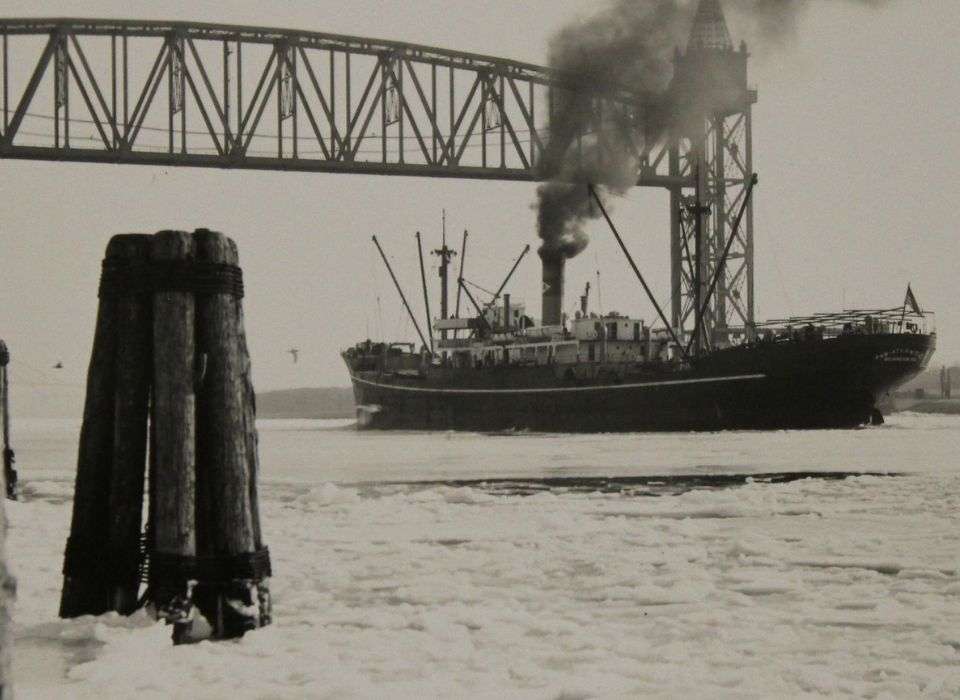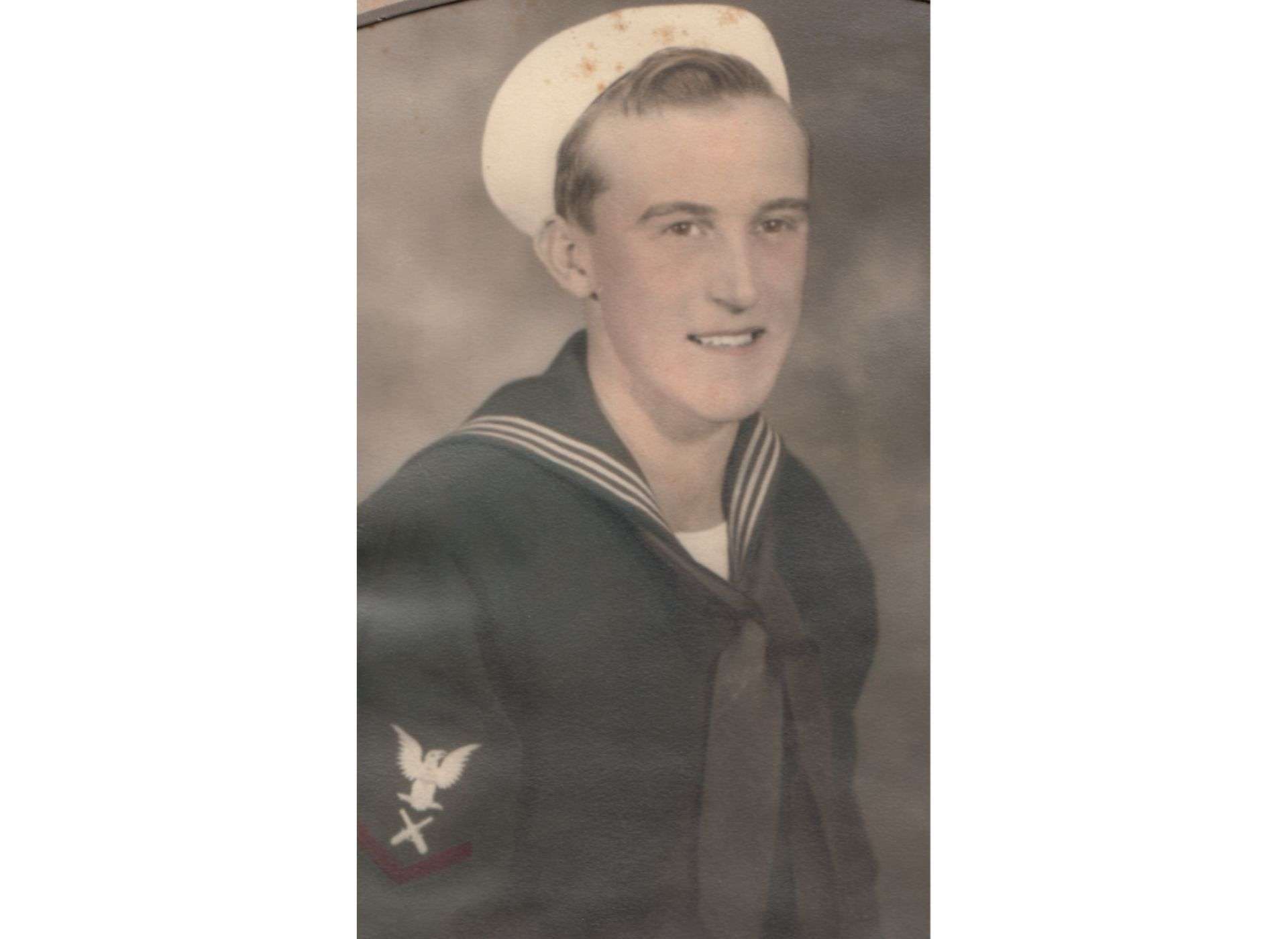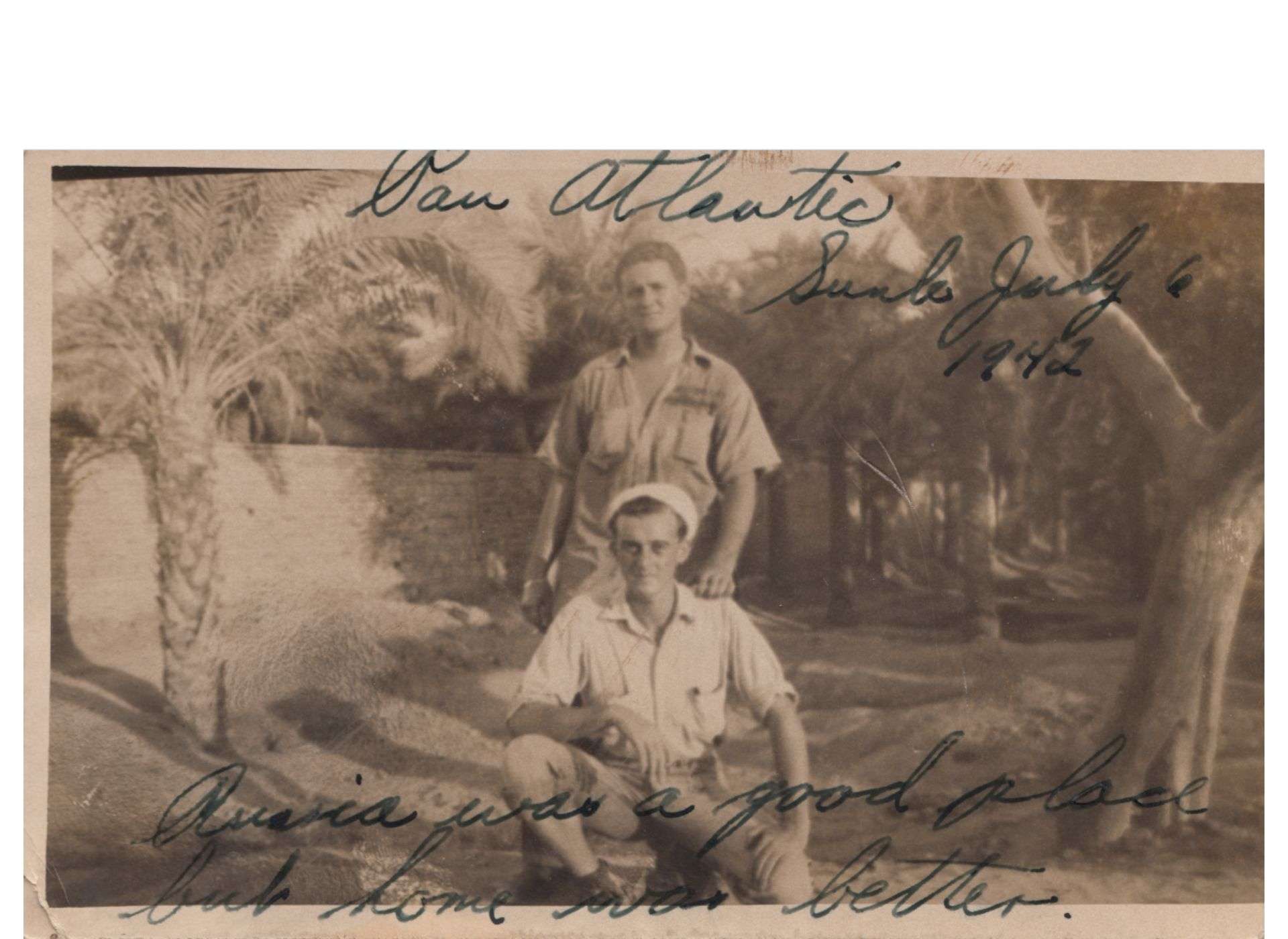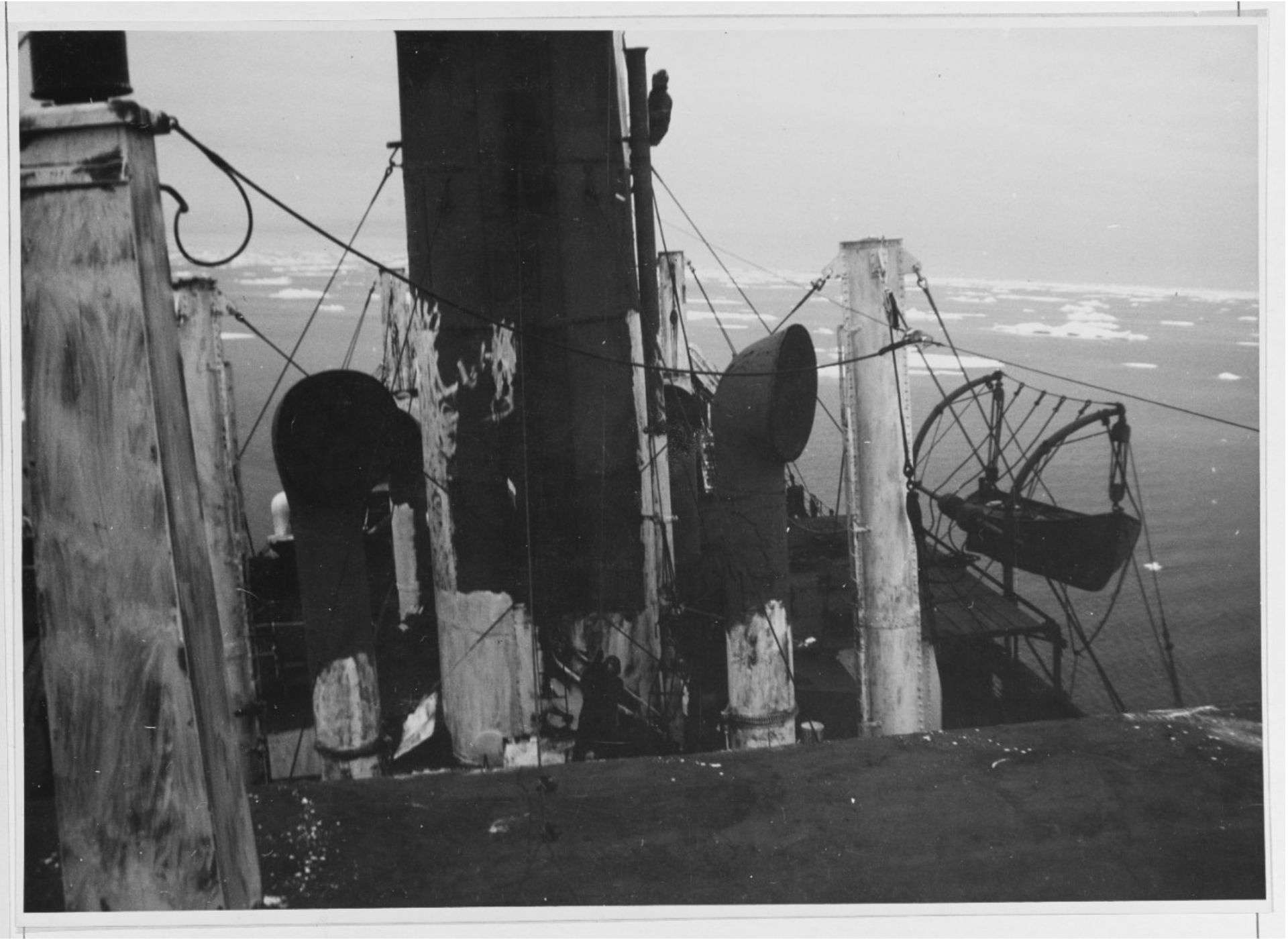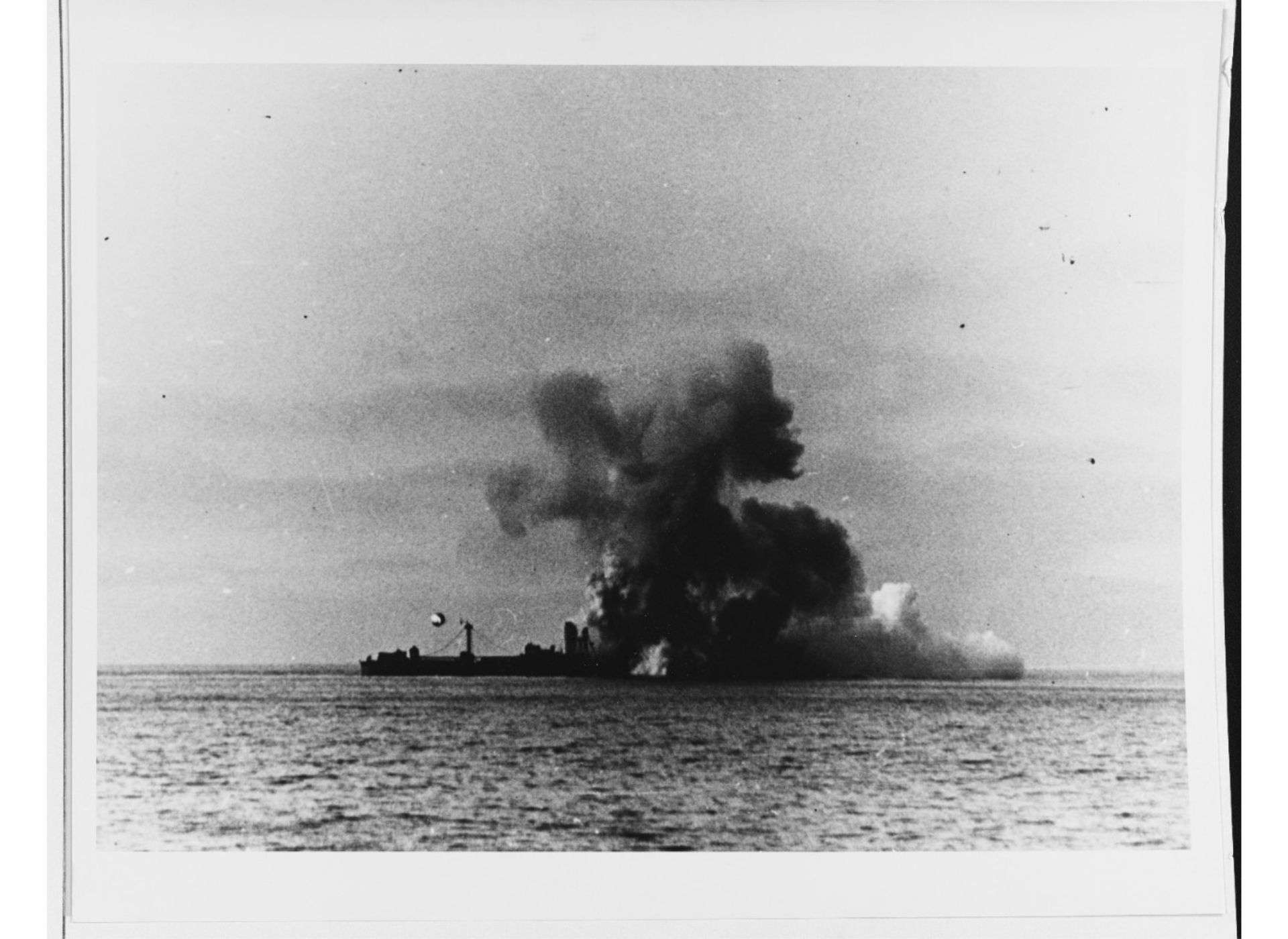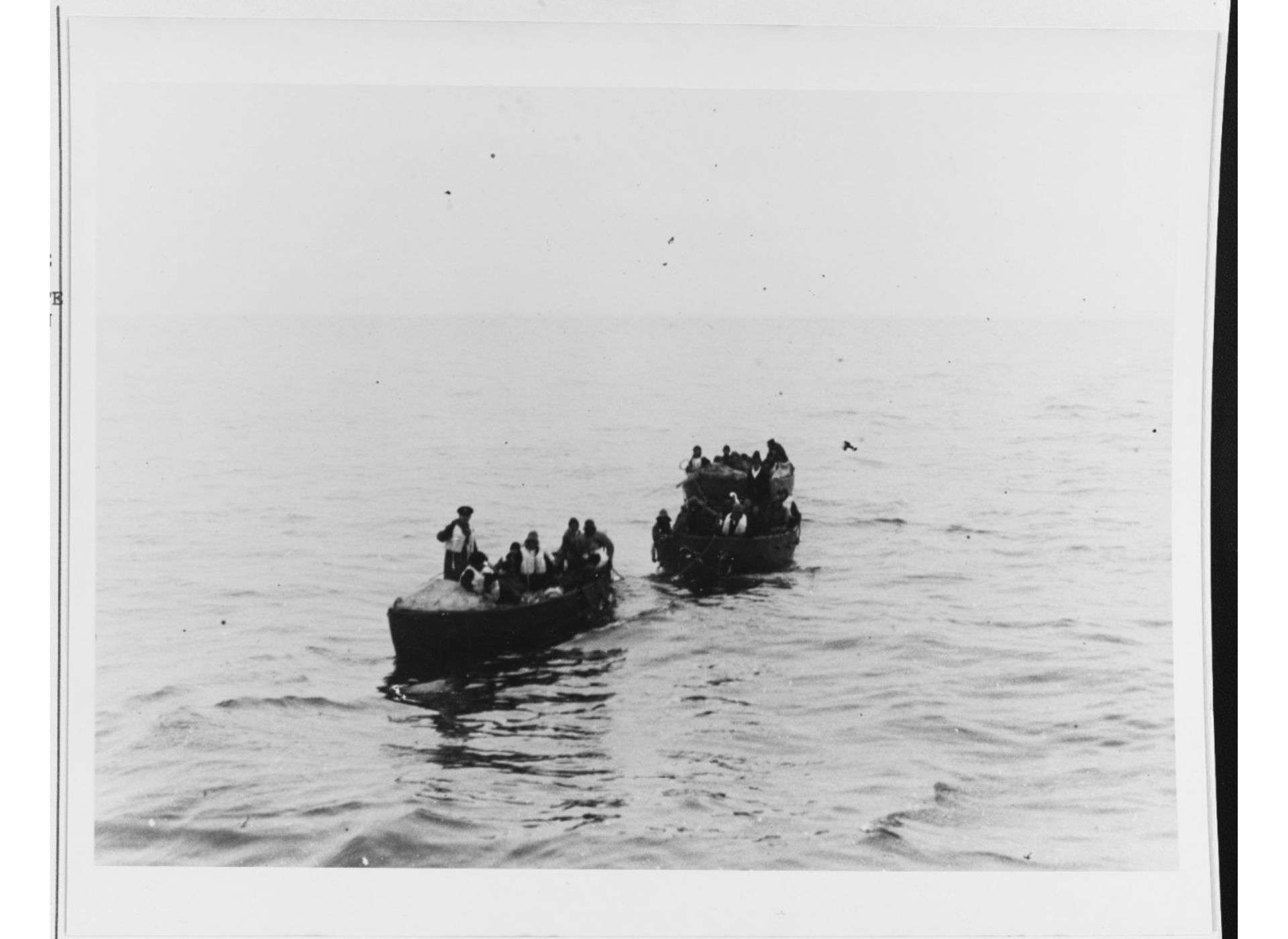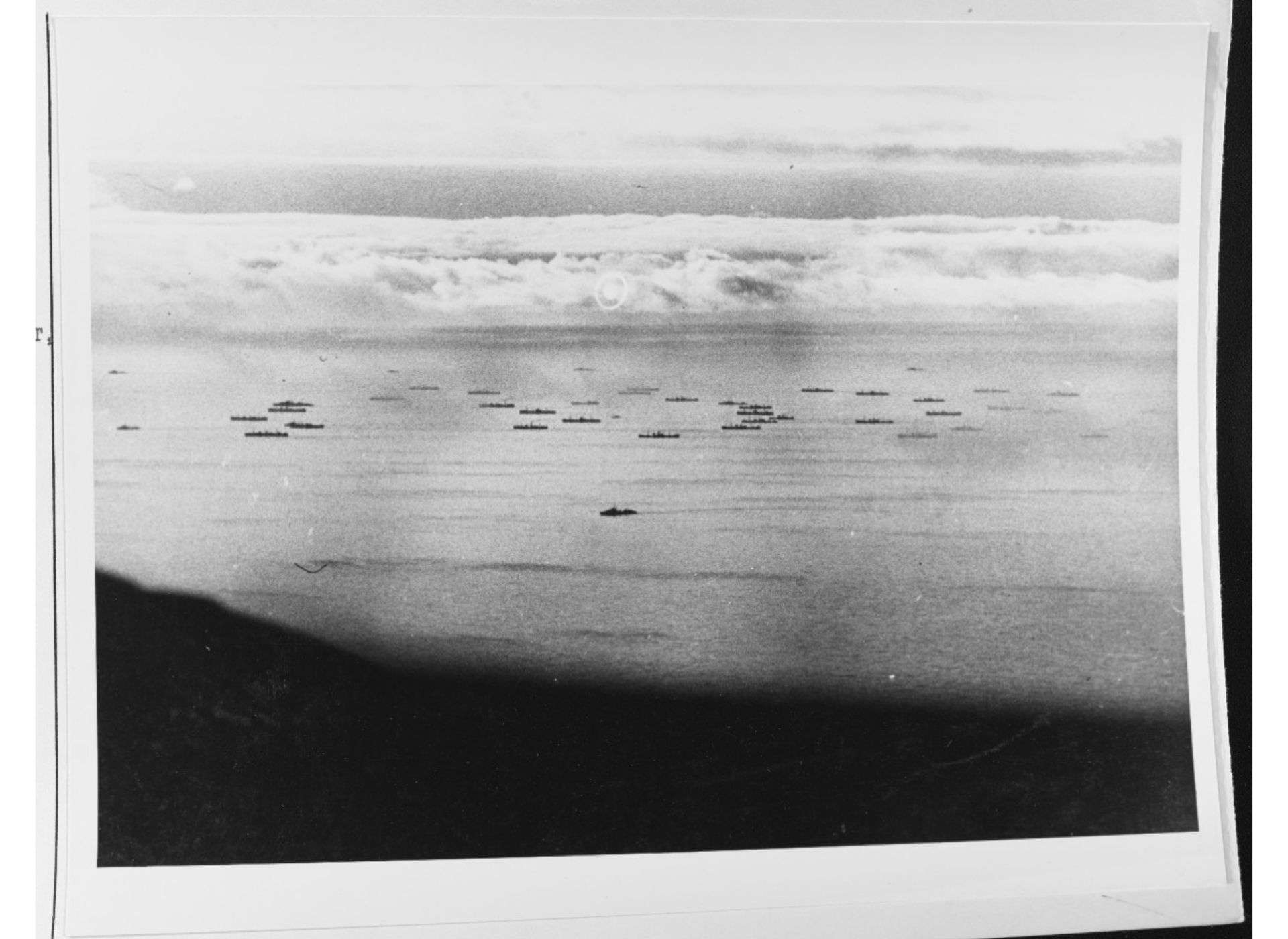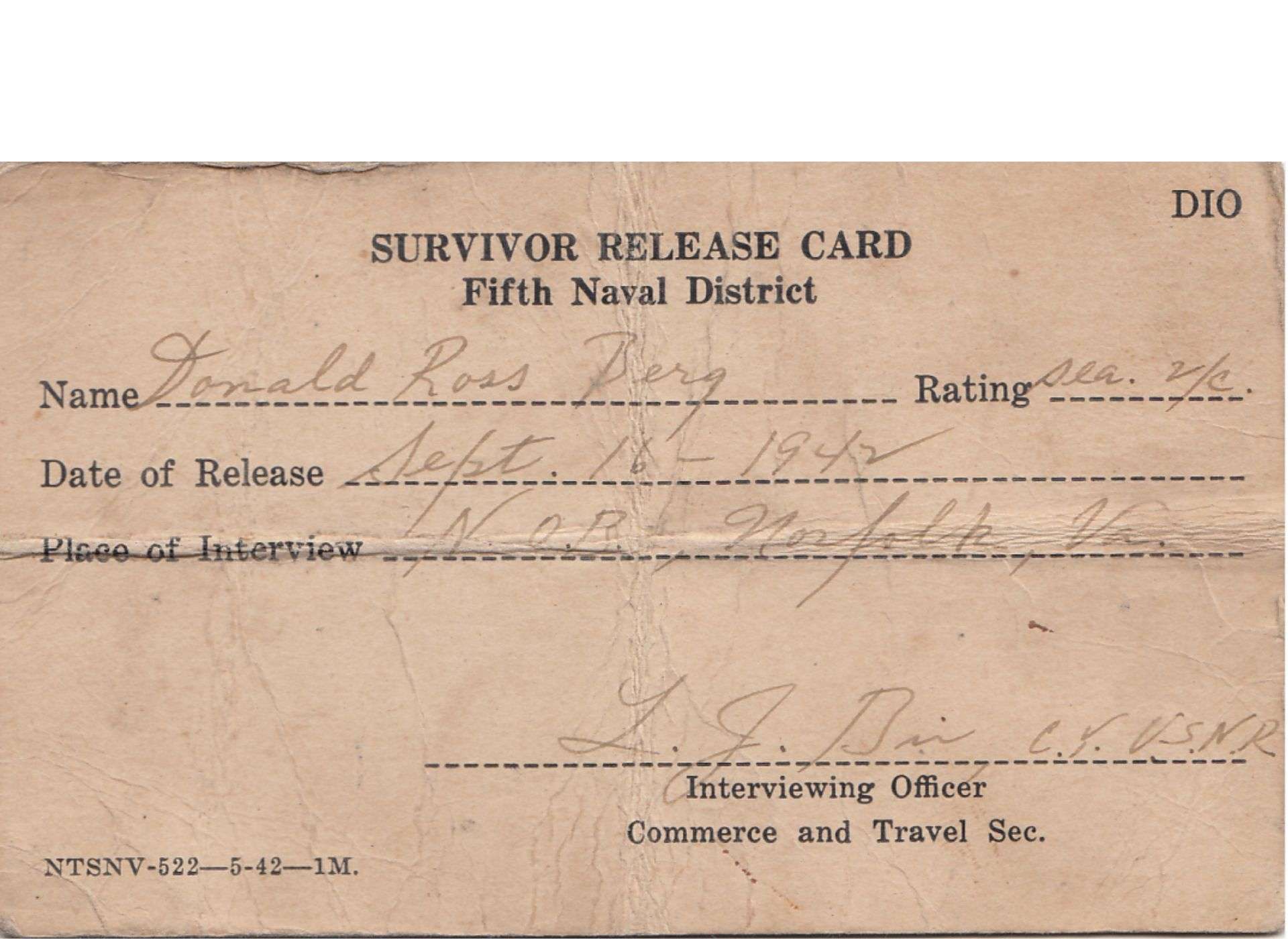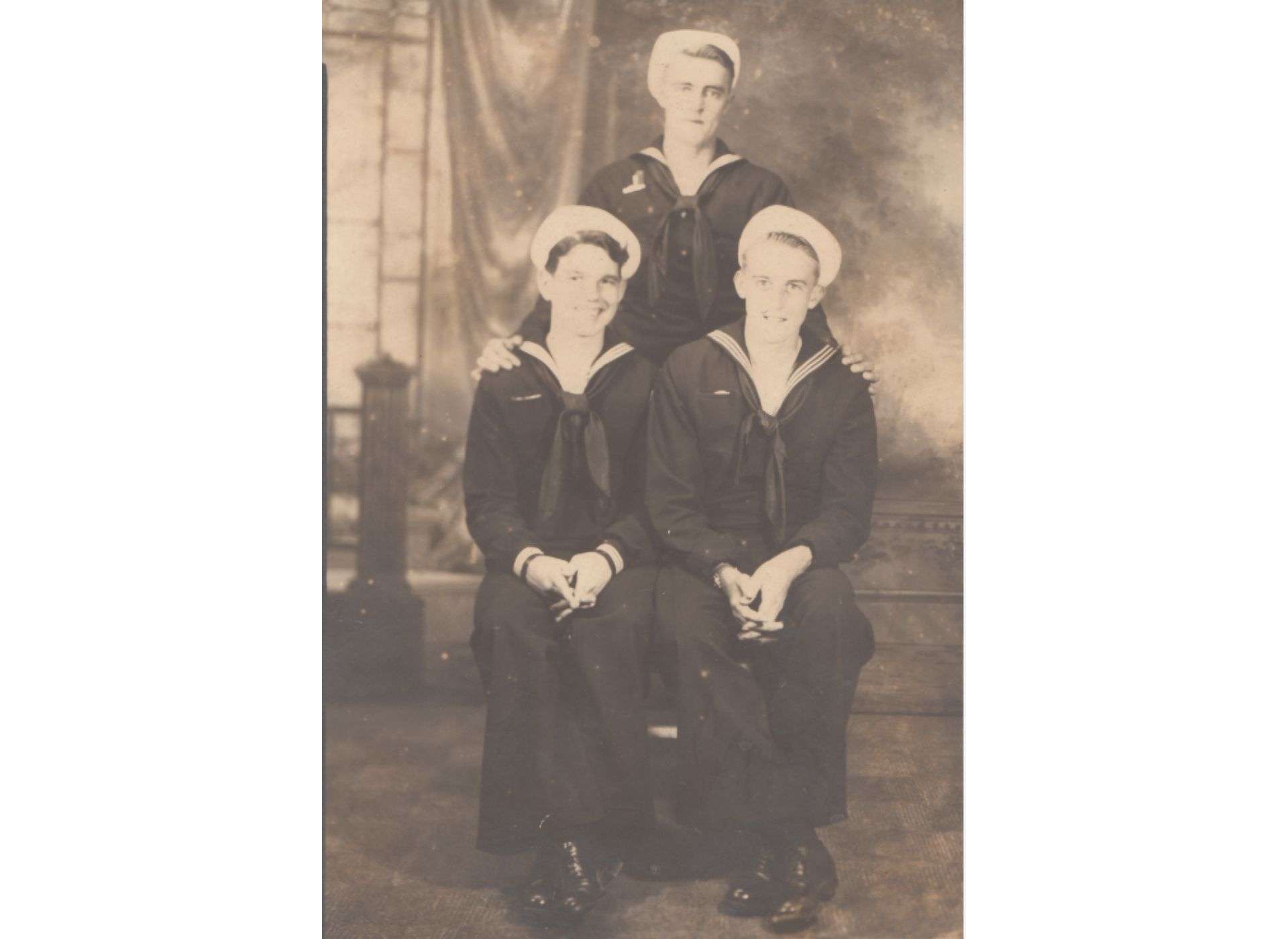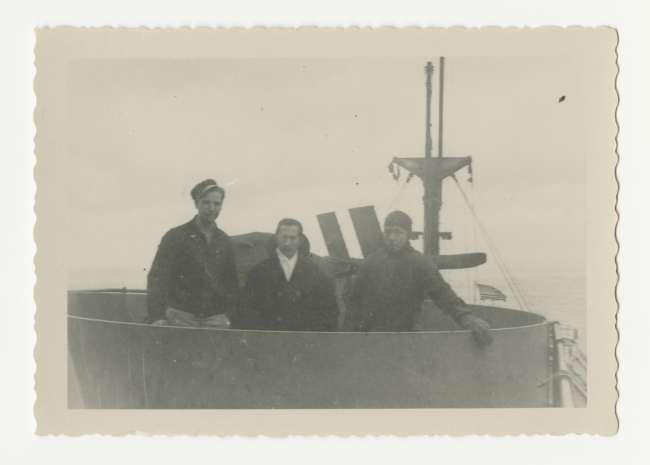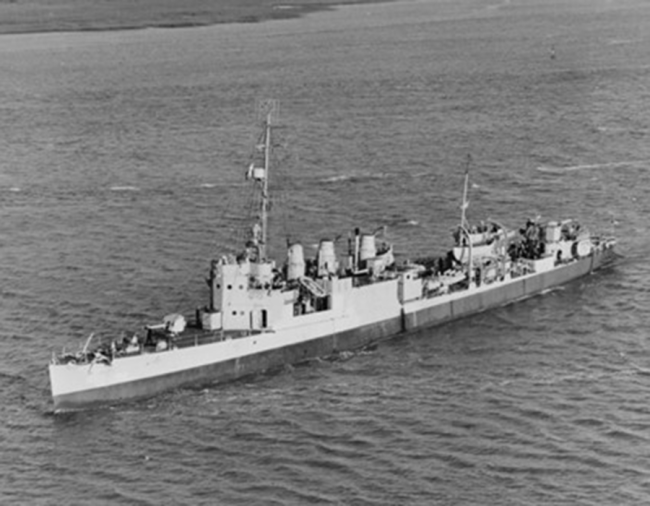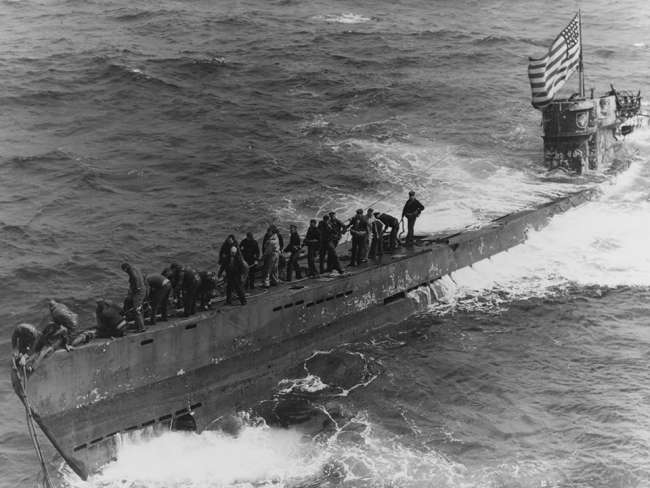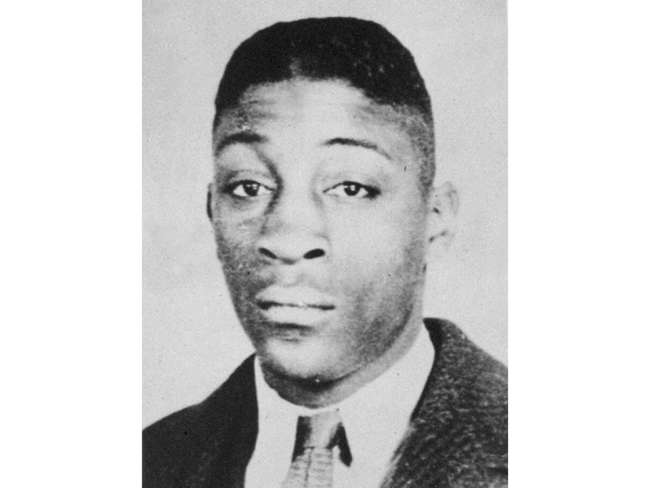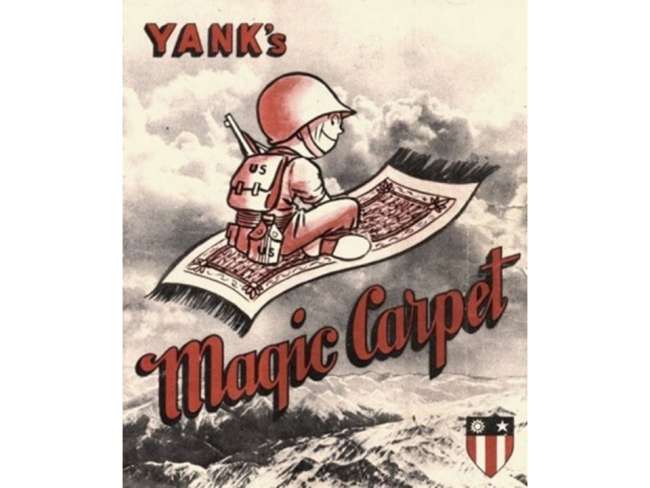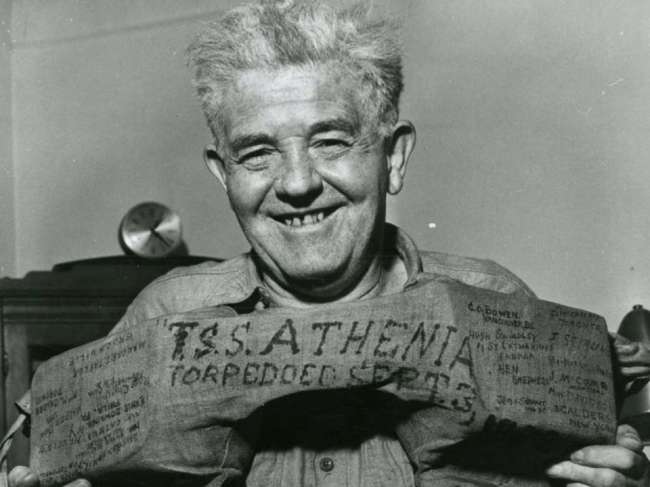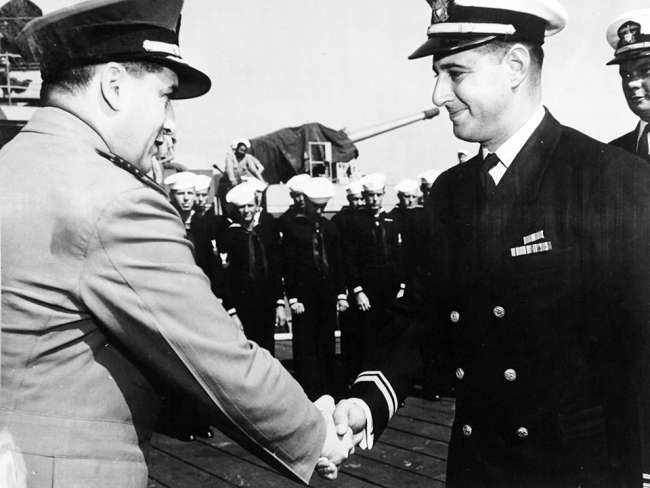2136 Hours: Most Immediate. My 2123 of the 4th. Convoy is to scatter.
– British Admiralty to commanders of Convoy PQ-17, July 4, 1942.
With just these few words, the fate of the Soviet Union bound Convoy PQ-17 was sealed and the story of Seaman Second Class Donald Ross Naggatz (Berg) begins. Naggatz was born in Hastings, Nebraska, but was raised in North Dakota. After the Japanese attack on Pearl Harbor in December 1941, Naggatz enlisted in the US Navy in January 1942. He soon found himself in the Naval Armed Guard which was responsible for manning weapons on US Merchant Marine vessels transporting men and matériel across the world. Naggatz completed his training and headed for duty on the SS Pan Atlantic and Convoy PQ-17.
Merchant ships leaving the United States bound for Europe were taken across the Atlantic in what was known as the convoy system. Groups of ships were gathered from ports across the country and brought together under protection from Allied naval vessels to make the treacherous journey across U-boat-infested waters to the United Kingdom. These convoys had specific code names to track where they were going and coming from. For example, convoys sailing for the Soviet Union were titled PQ and those leaving the Soviet Union QP.
Convoys supplying the Soviet Union began in August 1941 with PQ-1 and initially saw little German opposition to these Arctic shipments. However, by PQ-16 in May 1942, German resistance had dramatically increased. Out of a total of 30 ships in the convoy, the Germans sank or damaged nine, the largest PQ convoy losses to date. When Convoy PQ-17, along with Naggatz and the Pan Atlantic, sailed from Iceland on June 27, 1942, headed for the Soviet port of Arkhangelsk, they faced stiffening German air and naval defenses, brutal Arctic temperatures, and around-the-clock daylight which meant no protection from the cover of darkness. The Arctic route known as “The Murmansk Run” was about to turn deadly for the men and ships of PQ-17.
Initially, PQ-17 had a strong escort and covering force, including the battleship USS Washington (BB-56), to protect the 35-ship convoy from attack. Two ships were forced to turn back en route, leaving 33 merchantmen to face the gauntlet of German attacks beginning on July 2, 1942. Attacks against the convoy steadily increased until July 4 when the British Admiralty got word the sister ship to the German battleship Bismarck, the Tirpitz, was sailing to intercept the convoy. Not wanting to risk the destruction of the warships, the Admiralty sent the following messages to the convoy commanders:
2111 Hours: Most Immediate. Cruiser force withdraw westward at high speed.
2123 Hours: Immediate. Owing to the threat of surface warships, convoy is to disperse and proceed to Russian ports.
2136 Hours: Most Immediate. My 2123 of the 4th. Convoy is to scatter.
-

Seaman Second Class Donald Ross Naggatz (Berg) in his US Navy uniform. Gift In Memory of Donald Ross Naggatz, 2018.180.001
-

Photograph of Donald Ross Naggatz and an unidentified man. The writing on the picture reads: “Pan Atlantic Sunk July 6 1942 Russia was a good place but home was better.” Gift In Memory of Donald Ross Naggatz, 2018.180.002
-

Crewmembers of SS Troubadour hurriedly camouflaging the ship with white paint to blend with Arctic ice during the passage of Convoy PQ-17 to Russia in July 1942. Courtesy Naval History and Heritage Command.
-

A merchant ship exploding after being struck by a torpedo. The photograph was taken by the attacking German U-boat. Courtesy Naval History and Heritage Command.
-

A German U-boat comes alongside lifeboats from the SS Carlton to interrogate her captain. The merchantman was torpedoed and sunk by a U-boat on July 5, 1942, during the battle of Convoy PQ-17. Courtesy Naval History and Heritage Command.
-

German aerial reconnaissance photo of PQ-17 underway at sea. The presence of a British cruiser, at left, indicates that the photo was taken before July 4, 1942, when the convoy was ordered to scatter. Courtesy Naval History and Heritage Command.
-

Survivor Release Card given to Naggatz after his return to the United States. Gift In Memory of Donald Ross Naggatz, 2018.180.003
-

Photograph of Naggatz (bottom right) and two other surviving US Naval Armed Guardsmen from the SS Pan Atlantic, Moses L. Guthrie (standing center) and Dale L. Gosnell (left). Gift In Memory of Donald Ross Naggatz, 2018.180.004
“Convoy is to scatter.” These words sent chills down the spines of the men sailing in these merchant ships. While the thought was that scattering the convoy would make it harder for the Germans to sink the ships, what followed was the exact opposite and meant disaster for PQ-17. Without support from warships and left to fend for themselves, the merchant ships were sitting ducks for the German Kriegsmarine and Luftwaffe.
On July 5, 12 merchant ships were sunk by German attacks. Seaman Naggatz and the Pan Atlantic’s luck ran out on July 6. The ship was valiantly trying to fight off German aerial attacks, but was hit by two bombs dropped by a Ju-88 bomber at 6:10 pm. The bombs set off the supply of cordite the ship was carrying, blowing apart the forward section of the vessel. The damage was so severe the ship sank in three minutes, preventing any distress signal from being sent.
Naggatz was manning a machine gun when the bombs hit and was thrown into the frigid sea. He clung to pieces of floating ice until he found a raft with a dead body on it. He was forced to push the body into the water for his own survival. After floating alone for a day, Naggatz was picked up by a lifeboat of his fellow survivors. The men spent three more days floating in the lifeboat until being rescued by the HMS Lotus. Out of a merchant marine crew of 37, 18 were killed. Seven of the 11 US Naval Armed Guard were lost as well. The survivors were taken to the Soviet Union for recuperation. Naggatz had to have his shoes and socks cut off because his hands and feet were so swollen.
While Naggatz would return to service and fight in the Pacific, many men and ships involved with PQ-17 would not. Out of a total of 35 ships in the convoy, only 11 reached Arkhangelsk. Matériel losses in the convoy were staggering as well: 3,350 vehicles, 210 aircraft, 430 tanks, and 99,316 tons of other cargo such as food and ammunition were lost. Adding insult to injury, the reports of the Tirpitz coming out to intercept the convoy were false. Winston Churchill called PQ-17 “one of the most melancholy naval episodes in the whole of the war.” The heavy losses of PQ-17 and the follow-up PQ-18 in September caused convoys to the Soviet Union to be suspended until December 1942.
The men of the US Merchant Marine and US Naval Armed Guard fought against long odds during the Battle of the Atlantic. Most of the large convoy battles fought during the war have been overshadowed by other important events such as D-Day or the Battle of the Bulge. But without the courage and sacrifice of men like Seaman Naggatz fighting to make sure the goods got through, the whole course of the war could have been very different and stretched on for many more years.
Top image: SS Pan Atlantic Passing under Railroad Bridge at Cape Cod Canal, 1938. Courtesy National Archives.
James Linn
A New Orleans native, James Linn first became involved with the institution then known as The National D-Day Museum in 2001 as an eighth-grade volunteer on weekends and during the summer. Linn joined The National WWII Museum staff in 2014 and served as a Curator until 2020.
Cite this article:
MLA Citation:
APA Citation:
Chicago Style Citation:
